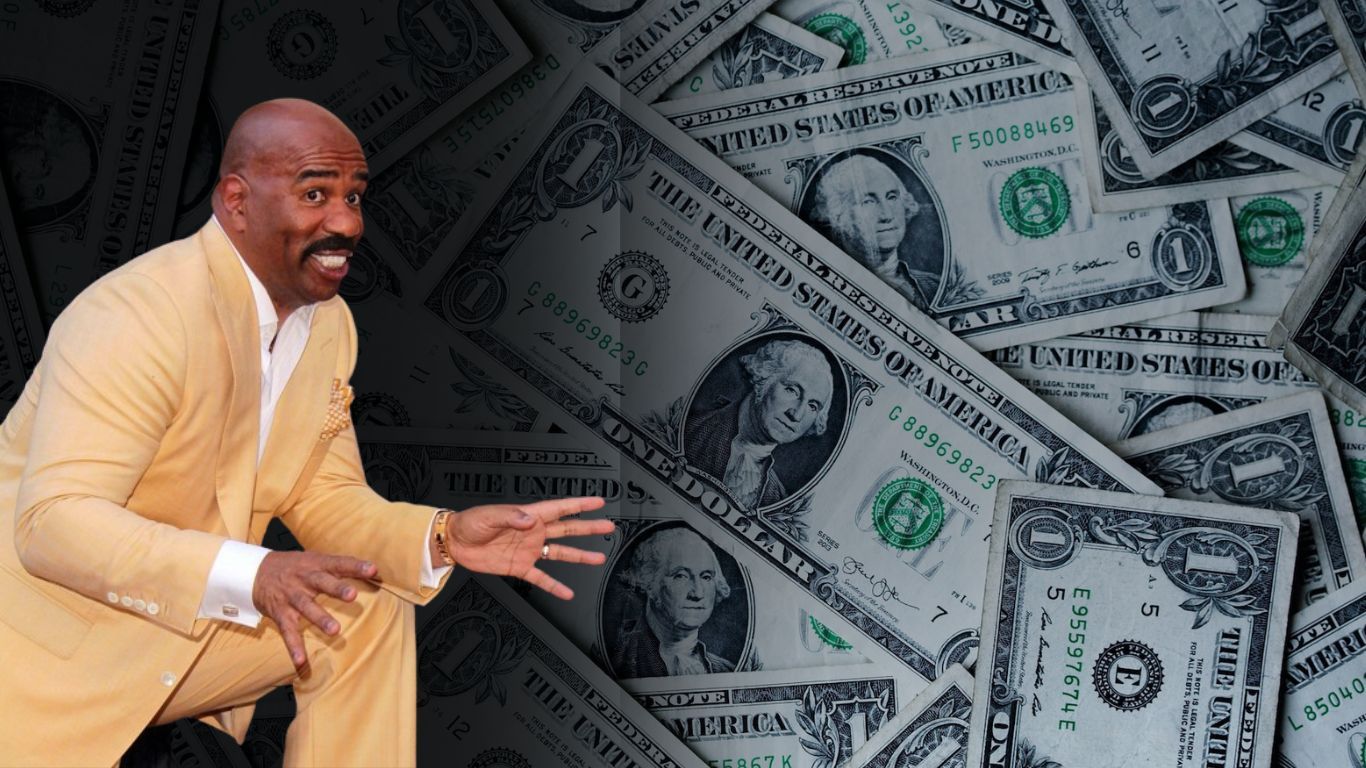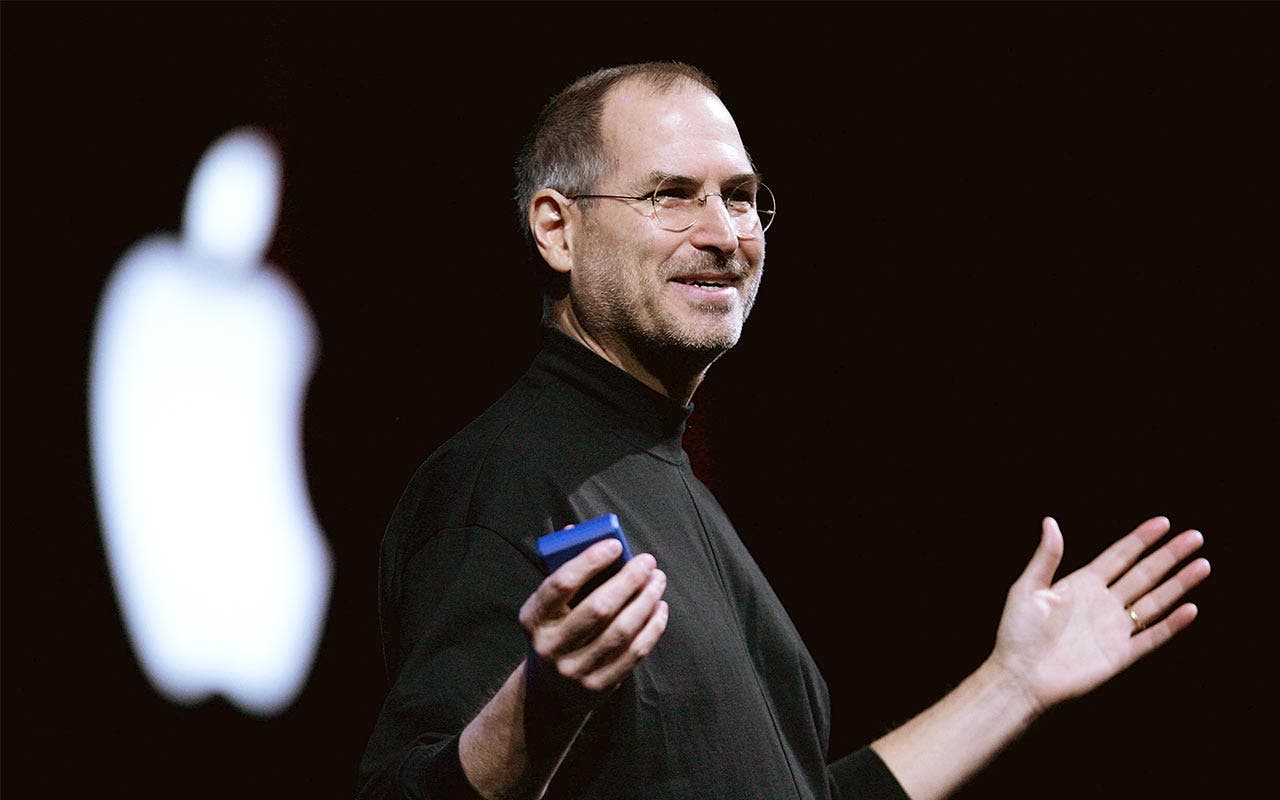Exploring The Net Worth Of Steve Jobs: A Look At His Financial Legacy
Understanding the financial standing of someone like Steve Jobs offers a fascinating look into the world of innovation and wealth creation. Many people wonder about the exact figure, and it's a topic that, you know, sparks a lot of curiosity. He was, after all, a pivotal figure who shaped much of the technology we use every single day.
His story, in a way, shows how ideas can turn into immense value. We see how a person's vision, combined with strategic business moves, really builds up financial success. It’s more than just numbers; it’s about the impact his work had on industries and, frankly, on how we all live our lives.
This article will look at the different parts that made up his wealth. We will explore his journey, from starting Apple to his time at NeXT and Pixar, and then his big return to Apple. It’s a story of ups and downs, but ultimately, it's about building something truly big, and then seeing the financial results of that effort, which is that, quite substantial.
Table of Contents
- Biography and Early Life
- The Early Days of Apple
- The NeXT Chapter: NeXT Computer
- Pixar Animation Studios: A Golden Investment
- The Return to Apple and Renewed Success
- Understanding the Net Worth at His Passing
- How Apple Stock Played a Role
- The Impact of His Financial Decisions
- Frequently Asked Questions About Steve Jobs' Net Worth
Biography and Early Life
Steve Jobs was born in San Francisco, California, in 1955. He was adopted shortly after his birth. His adoptive parents, Paul and Clara Jobs, raised him in Mountain View, California. This area would later become known as Silicon Valley. He showed an early interest in electronics and gadgets, very early indeed.
He attended Reed College in Oregon but dropped out after one semester. Even so, he continued to audit creative classes, like calligraphy. This decision, it turns out, later influenced the design of the Macintosh computer's typography. It's a small detail, but it really shows how things connect.
His friendship with Steve Wozniak started in high school. They both shared a passion for electronics. This connection, in a way, was the beginning of something truly significant. Their shared interest would lead to the creation of one of the most important companies in modern history, which is quite something.
Personal Details and Bio Data
| Detail | Information |
|---|---|
| Full Name | Steven Paul Jobs |
| Born | February 24, 1955 |
| Birthplace | San Francisco, California, U.S. |
| Died | October 5, 2011 (aged 56) |
| Spouse | Laurene Powell Jobs (m. 1991) |
| Children | 4 |
| Education | Reed College (dropped out) |
| Known For | Co-founder of Apple Inc., CEO of NeXT Inc., CEO of Pixar Animation Studios |
The Early Days of Apple
Steve Jobs and Steve Wozniak started Apple Computer in 1976. They worked out of Jobs's family garage. Their first big product was the Apple I computer. This machine, in some respects, was a hobbyist's dream. It paved the way for more complex personal computing, which was quite new at the time.
The Apple II followed, and it was a huge success. This computer really put Apple on the map. It sold millions of units and helped the company grow very quickly. This period saw Apple become a major player in the emerging personal computer market, which was then, very exciting.
Apple went public in 1980. This event made Jobs, and many early employees, very wealthy. His shares in the company became quite valuable. However, internal conflicts led to him being forced out of Apple in 1985. This was a difficult time for him, but it also led to new ventures, interestingly enough.
The NeXT Chapter: NeXT Computer
After leaving Apple, Steve Jobs founded NeXT Inc. in 1985. He wanted to build powerful computers for higher education and business markets. These machines were known for their advanced operating system. It was a very ambitious project, you know, to start fresh.
The NeXT computers, though technologically advanced, did not sell in large numbers. They were, in a way, too expensive for most people. However, the software developed at NeXT, especially its operating system, was very innovative. It was designed to help developers build and run sophisticated applications, sort of like a platform for serious work.
This software, in fact, became very important later on. Apple eventually bought NeXT in 1996. This acquisition brought Jobs back to Apple. The NeXT operating system technology became the foundation for Apple's macOS. So, the work done at NeXT, even if it wasn't a commercial hit on its own, had a lasting impact, which is quite something.
Pixar Animation Studios: A Golden Investment
While at NeXT, Steve Jobs also made a significant personal investment. In 1986, he bought the computer graphics division of Lucasfilm. This division became Pixar Animation Studios. He paid $10 million for it, which was a big sum at the time, naturally.
Pixar initially focused on selling high-end computer hardware. But their true strength was in animation. They produced short films to showcase their technology. Their first full-length feature film, "Toy Story," was released in 1995. It was a massive critical and commercial success, a real game-changer in animation, really.
When Pixar went public in 1995, it was a huge financial win for Jobs. His initial $10 million investment turned into billions. This was, arguably, his most profitable financial venture outside of Apple itself. The success of Pixar, it seems, secured a large part of his personal wealth, very significantly.
The Return to Apple and Renewed Success
Steve Jobs returned to Apple in 1997 after the company acquired NeXT. Apple was struggling at the time. Jobs became interim CEO and then full CEO. He quickly began to revitalize the company. He simplified product lines and focused on innovation, which was very much needed.
Under his leadership, Apple introduced a string of groundbreaking products. The iMac, the iPod, the iTunes Store, the iPhone, and the iPad all changed their respective industries. These products were designed to be user-friendly and visually appealing. They created a new kind of experience for people, allowing them to stream music and videos, and run all sorts of apps on their mobile devices.
Apple's stock price soared during this period. Jobs held a relatively small number of Apple shares after his return, but the company's market value grew immensely. His leadership, in a way, was key to this incredible turnaround. The value he created for Apple shareholders was, frankly, enormous, and it really solidified his legacy.
Understanding the Net Worth at His Passing
When Steve Jobs passed away in 2011, his net worth was estimated to be around $10.2 billion. This figure often surprises people who only think about his Apple shares. The vast majority of his wealth came from his investment in Pixar. This is a crucial point to understand, really.
After Disney acquired Pixar in 2006, Jobs became Disney's largest individual shareholder. He owned approximately 7.4% of Disney stock. This stake was worth far more than his Apple holdings at the time of his death. It shows how one smart investment can completely change a person's financial picture, very dramatically.
His Apple shares, while valuable, were not the primary component of his net worth. He had sold most of his Apple stock in the 1980s. When he returned to Apple, he received new stock options and shares, but the Pixar-to-Disney deal was, apparently, the biggest contributor to his personal fortune. It’s a detail that often gets overlooked, but it’s quite important.
How Apple Stock Played a Role
While Pixar was the main driver of his personal wealth, Apple stock was still very important to his story. It was the foundation of his career. He saw Apple grow from a small garage operation to a global tech giant. The company's success, in a way, reflected his vision and drive.
His initial public offering of Apple stock made him a millionaire. Even after his departure and return, the company's stock performance under his second tenure was legendary. This performance created immense wealth for countless shareholders and employees. It showed the world how a company built on a strong platform could thrive, allowing developers to build and run amazing apps on Mac, Windows, and Linux systems, and then later on mobile devices too.
The value of Apple stock continued to rise significantly even after his passing. This means the wealth he helped create for the company continued to grow. His legacy, it seems, extends far beyond his personal financial figures, touching the lives of many who benefited from Apple's growth, which is something to consider.
The Impact of His Financial Decisions
Steve Jobs' financial journey was unique. His decision to invest in Pixar, for instance, turned out to be incredibly smart. It wasn't just about animation; it was about recognizing potential in a new kind of storytelling. This investment, in a way, showcased his ability to see future trends, very clearly.
His experience at NeXT, even though it wasn't a commercial success, provided the technological foundation that Apple needed for its next generation of products. This shows how seemingly unsuccessful ventures can still lead to long-term value. It's about the building blocks, you know, that contribute to something bigger.
His life, and his net worth, tell a story of innovation, risk-taking, and perseverance. It’s a reminder that wealth often comes from creating something new and valuable for the world. His contributions to technology, from the way we interact with computers to how we stream entertainment, truly changed things. He helped build systems that allow people to watch Netflix movies and TV shows online, or stream right to their smart TV, game console, PC, Mac, mobile, tablet, and more. This broad impact, in some respects, is his true legacy, and it's quite profound. Learn more about innovation on our site, and you can also find out more about technology trends here.
Frequently Asked Questions About Steve Jobs' Net Worth
How much was Steve Jobs worth when he passed away?
Steve Jobs' net worth was estimated to be around $10.2 billion at the time of his death in October 2011. This figure largely came from his significant stake in The Walt Disney Company, which he gained through the sale of Pixar.
Did Steve Jobs own a lot of Apple stock when he died?
No, not a large percentage. While he was the co-founder and CEO of Apple, the majority of his personal wealth did not come from Apple stock at the time of his passing. He had sold most of his original Apple shares in the 1980s. His largest asset was his Disney stock, which he received when Disney acquired Pixar.
How did Pixar contribute to Steve Jobs' wealth?
Pixar was a major factor in Steve Jobs' net worth. He bought the company for $10 million in 1986. When Pixar was sold to Disney in 2006, his stake in Pixar converted into a substantial amount of Disney stock, making him Disney's largest individual shareholder. This investment, in a way, grew exponentially and became the biggest part of his financial fortune.

How Steve Harvey Defied The Odds And Became One Of The Richest Men On

Steve Jobs Net Worth 2024 - Imogen Lorrin

Steve Jobs Net Worth and Apple Earnings - Vip Net Worth